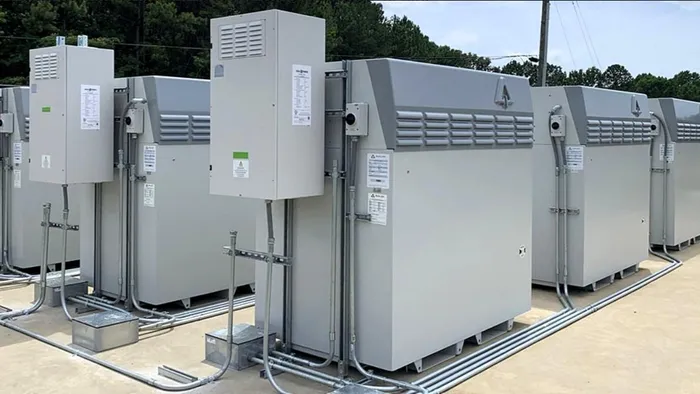Global demand for vanadium redox flow batteries could power SA’s industrial growth

A new study by the Localisation Support Fund shows global demand for vanadium redox flow batteries is set to surge, presenting South Africa with a major industrial opportunity.
Image: Invinity Energy Systems
SOUTH Africa could be poised to capitalise on a rapidly growing global market for vanadium redox flow batteries (VRFBs), according to a new study commissioned by the Localisation Support Fund (LSF). The research highlights the potential for the country to leverage its rich vanadium reserves to boost industrialisation and support the clean energy transition.
The study, conducted by Customised Energy Solutions (CES), projects a tenfold increase in global VRFB capacity by 2030, from 4 GWh today to 40 GWh. While growth is expected to be gradual over the next few years, installations could accelerate from 2027 onwards, reaching between 12 GWh and 50 GWh annually by 2030.
“This presents a major opportunity for South Africa to advance its vanadium mining, refining, and downstream processing capabilities,” said Irshaad Kathrada, CEO of LSF.
VRFBs are long-duration energy storage (LDES) systems that can stabilise power grids and store renewable energy for extended periods. They offer long cycle life between 10,000 and 20,000 cycles and operational lifespans of 25–30 years, with no performance degradation at full capacity. The batteries are inherently safe, thermally stable, and nearly 100% recyclable, while projected costs are expected to drop to levels comparable with lithium iron phosphate (LFP) batteries for long-duration applications.
The surge in VRFB deployment is expected to significantly increase vanadium demand. The share of global vanadium consumption for VRFBs is projected to rise from 5% in 2024 to almost 27% by 2030, supporting a doubling of global production.
South Africa is strategically positioned to benefit from this trend. “Our high-grade vanadium reserves rank among the largest and richest in the world. Coupled with recent policy alignment on critical minerals, we have the potential to develop a globally competitive downstream industry,” said Kathrada.
However, the study cautions that the global VRFB supply chain is heavily concentrated. As of 2024, eight companies, mainly based in China, accounted for over 90% of vanadium electrolyte production. While this concentration has driven technological development, it also highlights the need for regional diversification to reduce supply chain risks.
Government officials are emphasising localisation and beneficiation as key strategies. Deputy Minister Samantha Graham-Maré of the Department of Electricity and Energy noted that the South African Renewable Energy Masterplan (SAREM) provides a clear roadmap for using renewable energy and storage value chains to drive industrial growth and energy security. Deputy Minister Zuko Godlimpi of the Department of Trade, Industry, and Competition added that localisation is essential not only for production but also for building a sustainable industrial base and creating lasting jobs.
South Africa has already made some moves in the VRFB space. In 2020, the Industrial Development Corporation and Bushveld Minerals co-invested in Bushveld Electrolyte Company (BELCO) to develop local vanadium electrolyte production. While progress has been slowed by financial challenges at Bushveld Minerals, the investment demonstrates the country’s potential to develop strategic capabilities.
With global demand for long-duration energy storage expected to surge, the report positions South Africa at a critical juncture. It argues that by supporting local beneficiation, refining, and manufacturing, the country could anchor itself in emerging global VRFB supply chains, turning its mineral wealth into industrial capability and positioning itself as a key player in the green energy transition.